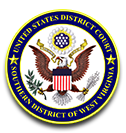Clawback Orders, Protective Orders, and Sealed Documents
- Clawback Orders.
At the court's request, or if the parties jointly agree to the entry of an order governing the clawback of privileged or protected materials that are inadvertently disclosed, the parties should complete and submit one of the following orders, which are preferred by the court: Order Governing the Inadvertent Disclosure of Documents and Materials under Rule 502(b), available on-line at www.wvsd.uscourts.gov, or Order Governing the Inadvertent Disclosure of Documents and Materials under Rule 502(d), also available on-line. Motions seeking to modify the provisions of the approved clawback orders should be made sparingly and only for good cause. - Protective Orders.
To succeed on a motion for the entry of a protective order shielding information from dissemination, the movant or movants must demonstrate with specificity that (1) the information qualifies for protection under FR Civ P 26(c), and (2) good cause exists for restricting dissemination on the ground that harm would result from its disclosure. When filing a joint motion for the entry of a protective order, the movants shall complete and submit with the motion the court’s on-line Protective Order found at www.wvsd.uscourts.gov. The court’s on-line Protective Order is the preferred protective order in this district. Therefore, motions requesting modifications to the provisions of the court’s Protective Order should be made sparingly and only for good cause. - Sealed Documents.
- General. The rule requiring public inspection of court documents is necessary to allow interested parties to judge the court=s work product in the cases assigned to it. The rule may be abrogated only in exceptional circumstances.
- Submission. Unless otherwise authorized by law, a motion to seal shall be filed electronically pursuant to the Administrative Procedures for Electronic Case Filing and accompanied by a memorandum of law which contains:
- the reasons why sealing is necessary, including the reasons why alternatives to sealing, such as redaction, are inadequate;
- the requested duration of the proposed seal; and
- a discussion of the propriety of sealing, giving due regard to the parameters of the common law and First Amendment rights of access as interpreted by the Supreme Court and our Court of Appeals.
